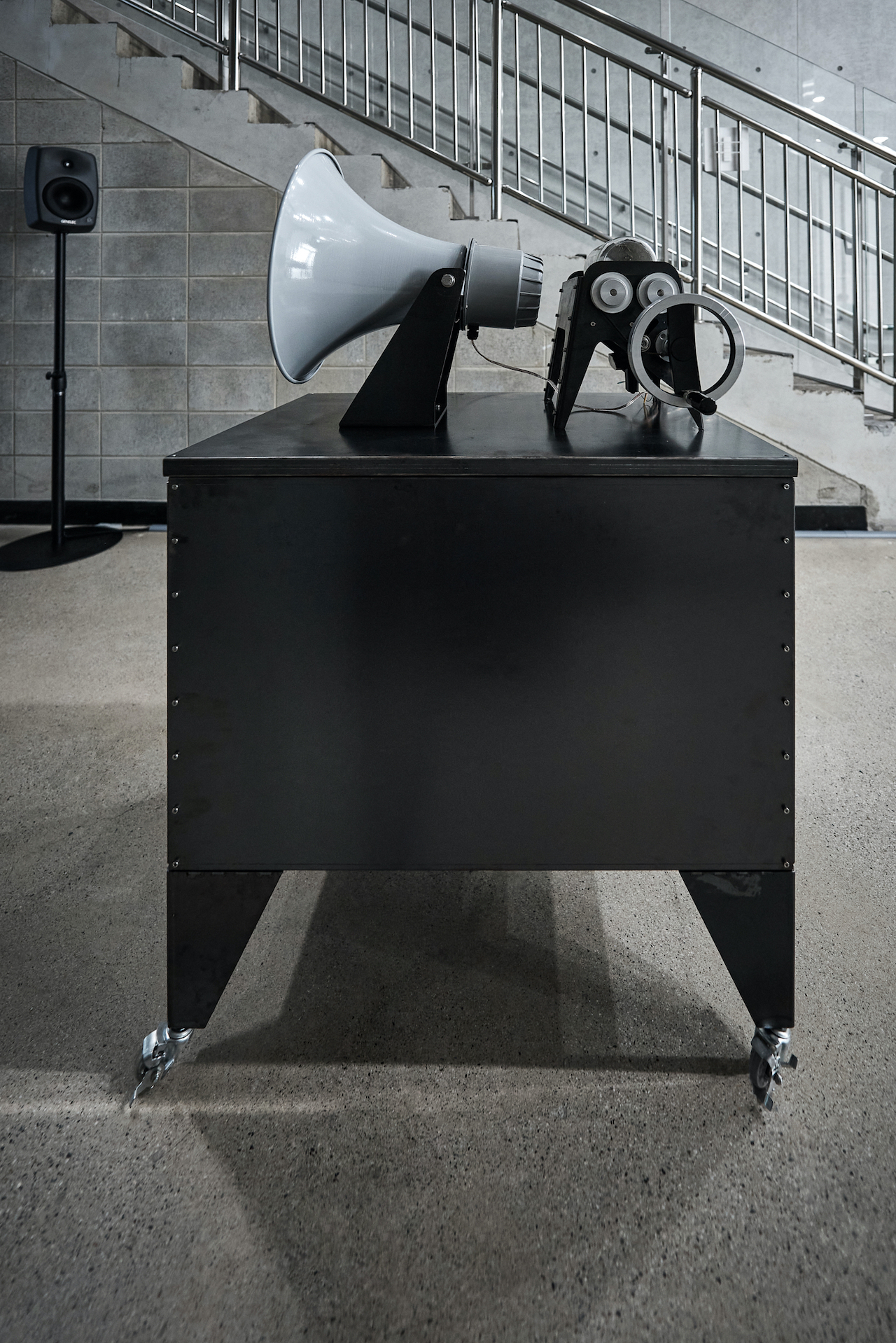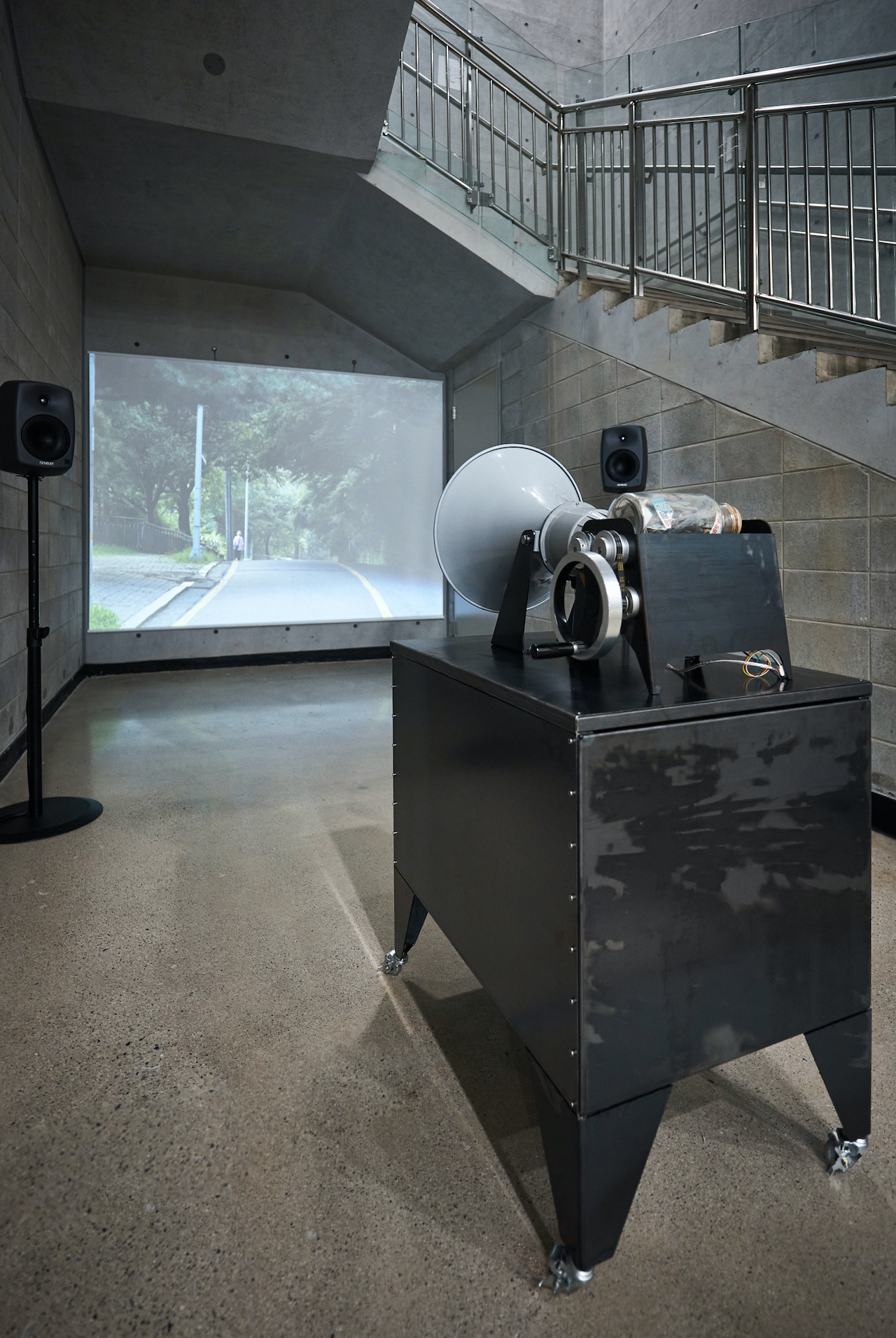도시재생장치#1: 청주
이 작품은 청주의 사라져 가는 장소와 소리를 재생 (playback/ recycle/regeneration)하는 음향 장치와 그에 반응하는 이미지로 구성된 작품이다. 이 작품은 소리를 기록하는 최초의 장치라고 알려진 ‘포노토그래프에 영감을 받아 제작되었다. 이 장치로 기록한 소리를 당시에는 재생할 수 없었다. 이후 포노토그래프는 역사 속으로 사라졌으나, 1860년 당시에 기록한 소리를 연구를 통해 현대의 기술로 재생해낼 수 있었다. 포노토 그래프가 간직했던 19세기의 소리를 되살리듯이, 고도로 발달한 머신러닝 기술이 과거, 또는 사라져가는 현재를 되살릴 것이라는 작가의 상상이 더해져 지금의 ‘도시재생장치’가 탄생했다. 장치의 손잡이를 돌리면 3만 5천장의 이미지가 이어져 연속적인 움직임이 만들어진다. 손잡이를 돌리는 속도에 따라 화면이 움직이는 속도도 달라지며, 반대로 돌리면 화면은 되감기를 하듯 역재생된다. 관객은 장치를 돌려보면서 디지털 환경 속 있고 지낸 옛 기기의 감각을 되살려 볼 수 있을 뿐만 아니라 사라져 가는 우리의 주변 공간과 도시를 감각하고 기억하게 될 것이다.
Urban Jaesaeng Device #1: Cheongju
This work consists of acoustic devices recycling/regenerating the disappeared places of Cheongju by playing back their sounds, and of images reacting to the devices. The work was inspired by the phonautograph, known as the world’s first ever sound recording device. The phonautograph has vanished into history with none of the sounds it recorded known to have ever been heard again, but one later study did play back some sounds recorded by it in 1860. Just as sounds from the 19th century were kept secret by the phonautograph and then revived, today’s Urban Jaesaeng Device was born with the addition of the artists’ imagining of the revival of this technology (the vanished present) in a remote future of highlydeveloped machine learning. Turning the handle of the device. 35.000 images create the illusion of movement. Depending on the speed of turning the handle, the speed at which the screen moves also varies, and when turned the other way, it is played backwards. As viewers turn the device with their own hands, they not only revive sensations of archaic devices that had disappeared into history in lieu of today’s digital environment, but also experience the feelings and memories of spaces and cities around us, sliding into the past and disappearing.
Team TRIAD(Honam Kim, Minje Jeon, Gwangmin Hong)
Urban Jaesaeng Device #1: Cheongju, 2022, Mixed media, 125x55x80cm
National Museum of Modern and Contemporary Art, Korea(MMCA), Cheongju




All image ⓒ National Museum of Modern and Contemporary Art, Korea (MMCA)